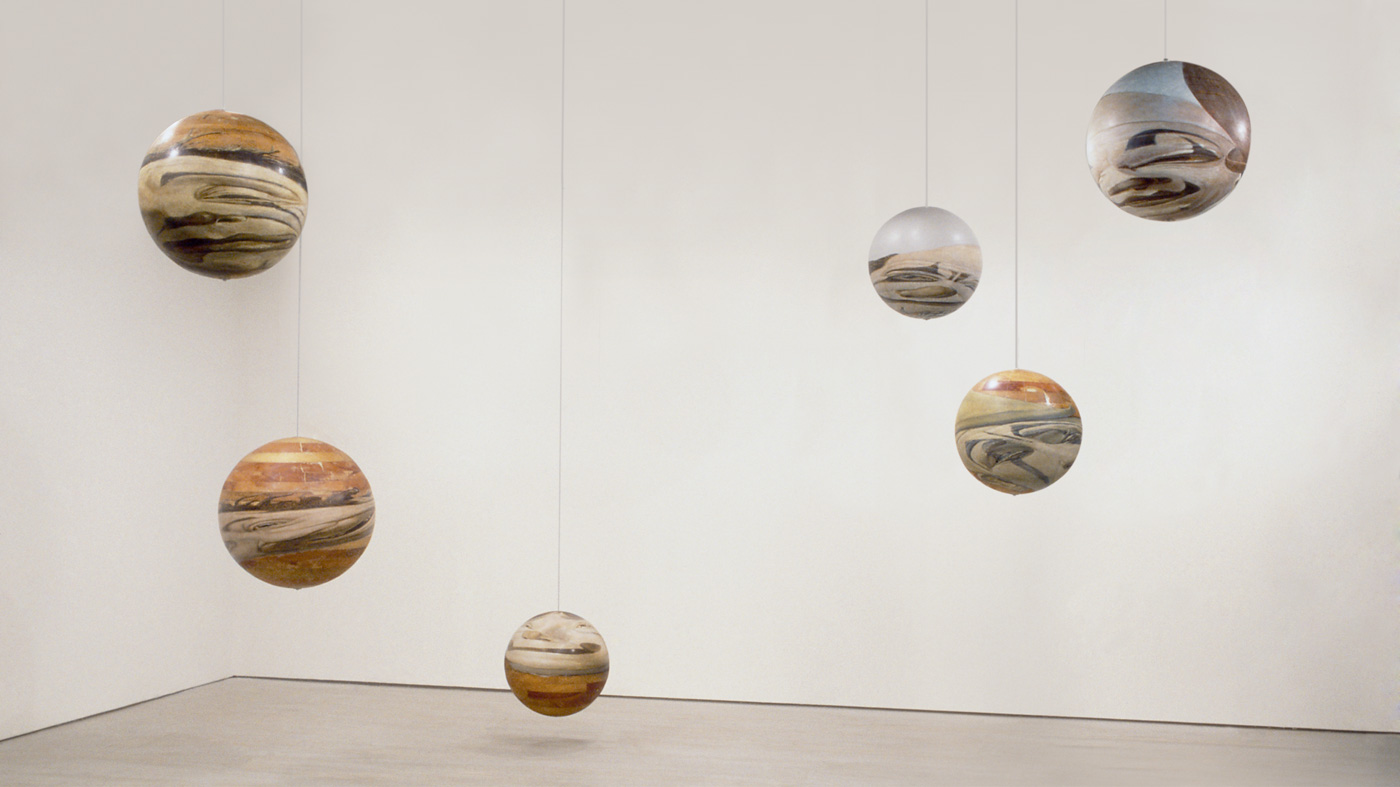clownspheres
1990 – 1991

In the course of his investigations, Jusidman discovered clowns, who use grease paint to accentuate and distort the natural in an attempt to create something new, desirable, and entertaining. John Berger once said of Picasso that he and his art perform like clowns, resorting to exaggeration “in order to make us recognize our contemporary environment in the parody of a distorting mirror.” Smeared leeringly across the orbs’ surface, Jusidman’s clowns appear even more freakish than they do in real life, despite their own illusion-distorting devices. When suspended by wire cords and spun around, their crooked grins speed up and slow down as their distortion progresses. Derived from archival photographs of famous clowns, these spheres work much like Jusidman’s landscapes. The legacy of their paint survives the person beneath, continuing to perform long after the living referent has ceased to exist.
—David A. Greene, Yishai Jusidman and the Re-enchantment of Painting,, 1995
My clownspheres explore pictorial description in a manner analogous to the treatment of pictorial space in The Astronomer series. Pictures of gesticulating faces of clowns are stretched around curving surfaces by way of transfer grids that remain visible in some of the wooden supports. The spheres must be circumambulated in order for the image to be fully revealed. In the process of forming a visual understanding of the depiction, our optical, motor, and interpretative capacities are set to work simultaneously. The full image is never encompassed within our retinas, but must be put together in our heads. Only then do we appreciate the dimensional complexities of the strange encounter between the pictorial and physical spaces that these clowns inhabit. From the tensions between form, subject, and presentation, one may derive the paintings’ psychological charge. This charge, in turn, belongs to the paintings themselves, yet resolves itself and resides in the minds of beholders.
—Yishai Jusidman
src="../wp-content/uploads/yishai-jusidman-clownspheres-1.jpg">
src="../wp-content/uploads/yishai-jusidman-clownspheres-2.jpg">
src="../wp-content/uploads/yishai-jusidman-clownspheres-3.jpg">
src="../wp-content/uploads/yishai-jusidman-clownspheres-4.jpg">
src="../wp-content/uploads/yishai-jusidman-clownspheres-5.jpg">
src="../wp-content/uploads/yishai-jusidman-clownspheres-6.jpg">
src="../wp-content/uploads/yishai-jusidman-clownspheres-8.jpg">
src="../wp-content/uploads/yishai-jusidman-clownspheres-7.jpg">
